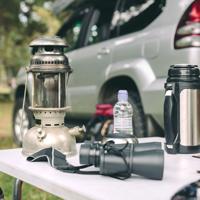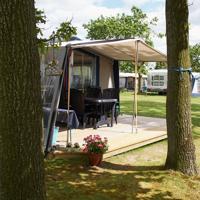In the world of camping gear, portable solar panels are quietly revolutionizing the way adventurers power their outdoor experiences. This handy innovation offers an efficient and environmentally friendly solution to keeping devices and essentials charged while out in nature. Let’s delve into how these small, lightweight power sources can make a difference on your next camping trip.
The Basics of Portable Solar Panels
Portable solar panels convert sunlight into electricity, which can be used to charge devices like smartphones, cameras, and even portable refrigerators. They come in various sizes and power outputs, typically measured in watts. Most portable solar panels are equipped with USB ports or connectors for direct charging.
Types of Portable Solar Panels
-
Monocrystalline Panels: Known for efficiency, these panels perform well even in low sunlight conditions. They are generally more expensive but offer durability and a higher power output per square meter.
-
Polycrystalline Panels: These are slightly less efficient compared to monocrystalline but are often more affordable. They are sufficient for campers who need moderate power for smaller devices.
-
Thin-Film Panels: Lightweight and foldable, thin-film panels are less efficient and take up more space for the same power output. They are, however, more flexible and portable.
Benefits of Using Portable Solar Panels
Environmentally Friendly
Portable solar panels help reduce your carbon footprint by harnessing the power of the sun. They allow campers to rely less on disposable batteries and traditional fossil fuel sources, aligning with sustainable camping practices.
Cost-Effective
While the initial investment might seem daunting, portable solar panels can save money in the long run. Harvard University’s research shows that solar energy is quickly becoming one of the most cost-effective renewable resources.
Convenient and Easy to Use
Setting up portable solar panels is remarkably straightforward. Most models are designed for user-friendly installation, letting you get started with minimal equipment and effort. Simply position the panel under direct sunlight and connect your device.
Considerations When Choosing a Portable Solar Panel
When selecting a solar panel, consider your energy needs. Determine what devices you need to charge and their power requirements. A panel with around 20-30 watts is sufficient for phones and small gadgets, while larger appliances may require more robust setups.
Another factor is portability. For backpackers, the weight and packability of the solar panel are crucial. Thinner, lighter panels might be more attractive despite their lower efficiency.
Examples of Reliable Portable Solar Panels
-
Goal Zero Nomad 20: A popular choice for its foldable design and durability, ideal for charging multiple small devices.
-
Anker 21W Solar Charger: Known for its portability and three USB ports, it’s a camper favorite due to its compact design and solid performance.
-
BigBlue 28W Solar Charger: Offers a balance of power and size, with dual USB ports and a smart charge feature that optimizes charging speed.
By embracing solar technology, campers can enjoy the great outdoors with the assurance that their activities remain sustainable. In doing so, they contribute to the preservation of nature while experiencing the many joys of exploring the wild.




